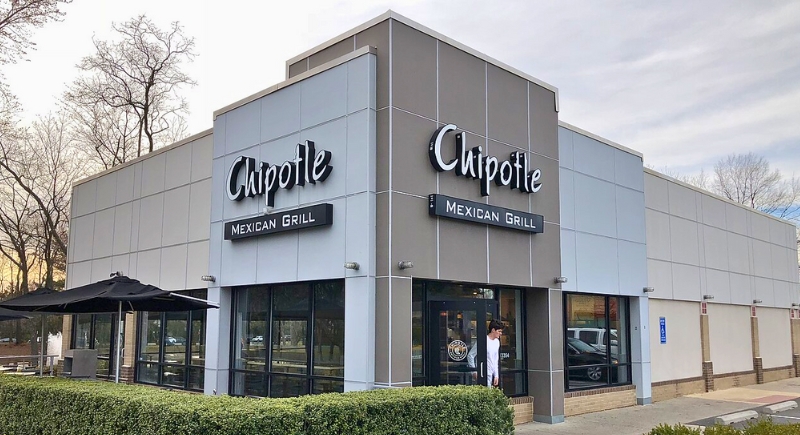Cash-Squeezed Gen Z and Millennials Are Bringing Down Popular Bowl Chains
Gen Z and millennials once treated build-your-own bowl spots as the perfect everyday meal. Greens, grains, and a protein felt convenient without being junk food. Lately, though, things look different. Anyone walking into Chipotle or Sweetgreen can spot the change right away, since the lines move far quicker than they used to. Rising costs are pushing people to rethink where they spend on food, and the fast-casual bowl scene is taking the hit.
Younger Diners Hit Pause On Their Bowl Habit

Image via Wikimedia Commons/Famartin
Executives at Chipotle, Cava, and Sweetgreen reported that customers between 25 and 35 have reduced their visits. This age group used to visit frequently, so the slowdown is hitting hard, as evidenced by recent earnings calls.
Chipotle’s traffic slipped 0.8 percent in its latest quarter. Cava’s same-store sales rose only 1.9 percent, a sharp drop from its 18.1 percent growth a year earlier. Sweetgreen posted a 9.5 percent decline.
Investors reacted to this as well, and over the course of a month, Chipotle fell 26 percent, Cava dropped 27 percent, and Sweetgreen slid 21 percent.
Younger diners have shifted a greater portion of their spending to groceries. Chipotle’s CEO noted that younger guests are choosing food at home because their budgets are strained. The predictable post-work stop may be fading.
Under Buckling Budgets
The reasons behind this pullback are straightforward. Younger workers are facing higher costs while their wages lag behind.
Unemployment among Americans ages 20 to 24 reached about 9.2 percent in August. The rate was near 10.5 percent for 16 to 24-year-olds, almost triple the rate seen among older workers. A JPMorgan Chase Institute review found that workers ages 25 to 29 saw the slowest income growth.
Debt pressure has also climbed. Student loan payments resumed in April after being on hold for years, and the 25 to 34-year-old group holds the second-highest balance nationwide. The Federal Reserve Bank of New York reported student loan balances rising by 47 billion dollars over the past year, with credit card balances up by 67 billion dollars, and mortgage balances up by 478 billion dollars.
Rent remains another burden, supported by the most recent CPI report of rent inflationat around 3.5 percent. A survey revealed that about 40 percent of Gen Z and millennial renters reduced restaurant spending to keep up with monthly bills, and more than 20 percent skipped meals.
This is the same group that embraced fast-casual bowl chains during their rise. Their financial strain is now reflected in dining patterns.
Fast Food Deals Turn Up The Pressure

Image via Getty Images/ShutterOk
Fast food chains have intensified competition with aggressive promotions. Chili’s offered a $10.99 meal deal. McDonald’s tested an $8 Big Mac Extra Value option. At the same time, a bowl with a drink and sides at Sweetgreen or Cava often reaches the mid-$20s, and a basic Chipotle meal crosses $10 in many cities.
Cava’s CEO defended the company’s pricing, noting that a chicken bowl still stays under $13 in New York City. Even so, lower-priced meal bundles elsewhere attract diners who are watching their spending.
Prices matter, though the broader financial pressure on younger diners plays a larger role in their changing habits.
And since discounts alone won’t reverse the slowdown, chains are experimenting with new strategies.
Cava introduced chicken shawarma as a fresh menu option. Sweetgreen outlined a plan with larger portions of chicken and tofu, updated recipes, and $13 salads for loyalty members.
Chipotle continues to work on menu development, smoother store operations, and a clearer value message. Analysts say that value goes beyond cost. Quality, customization, service, speed, and comfort shape how worthwhile a meal feels. Bowl chains that enhance this combination have a better chance of attracting younger diners again.